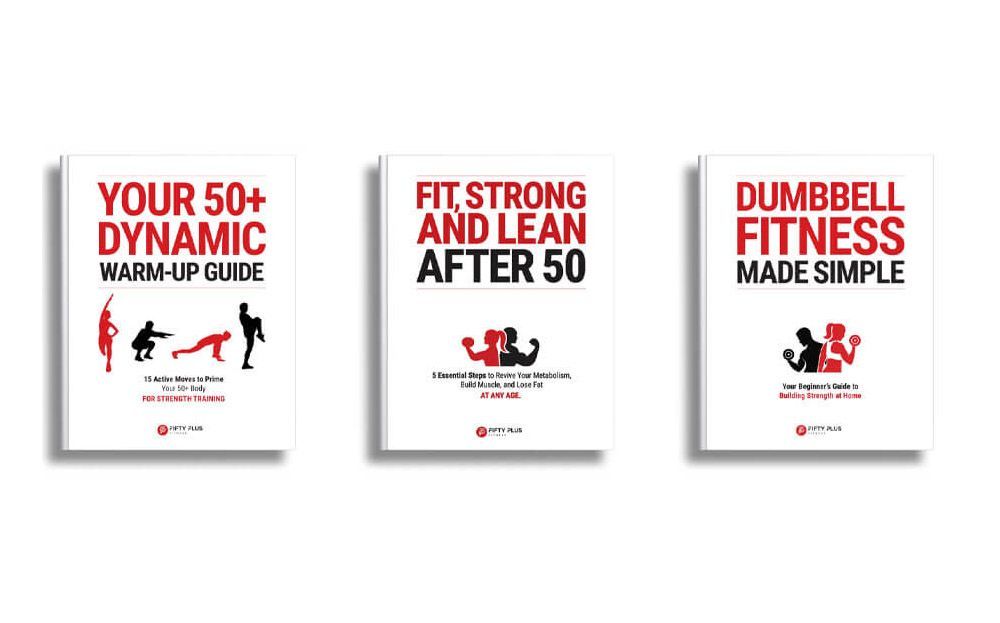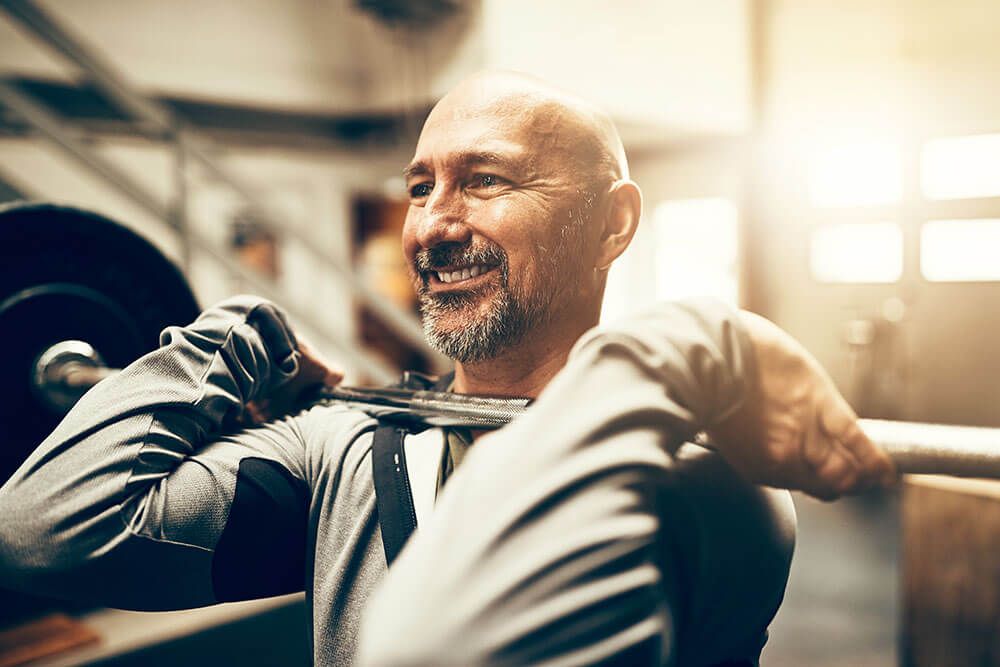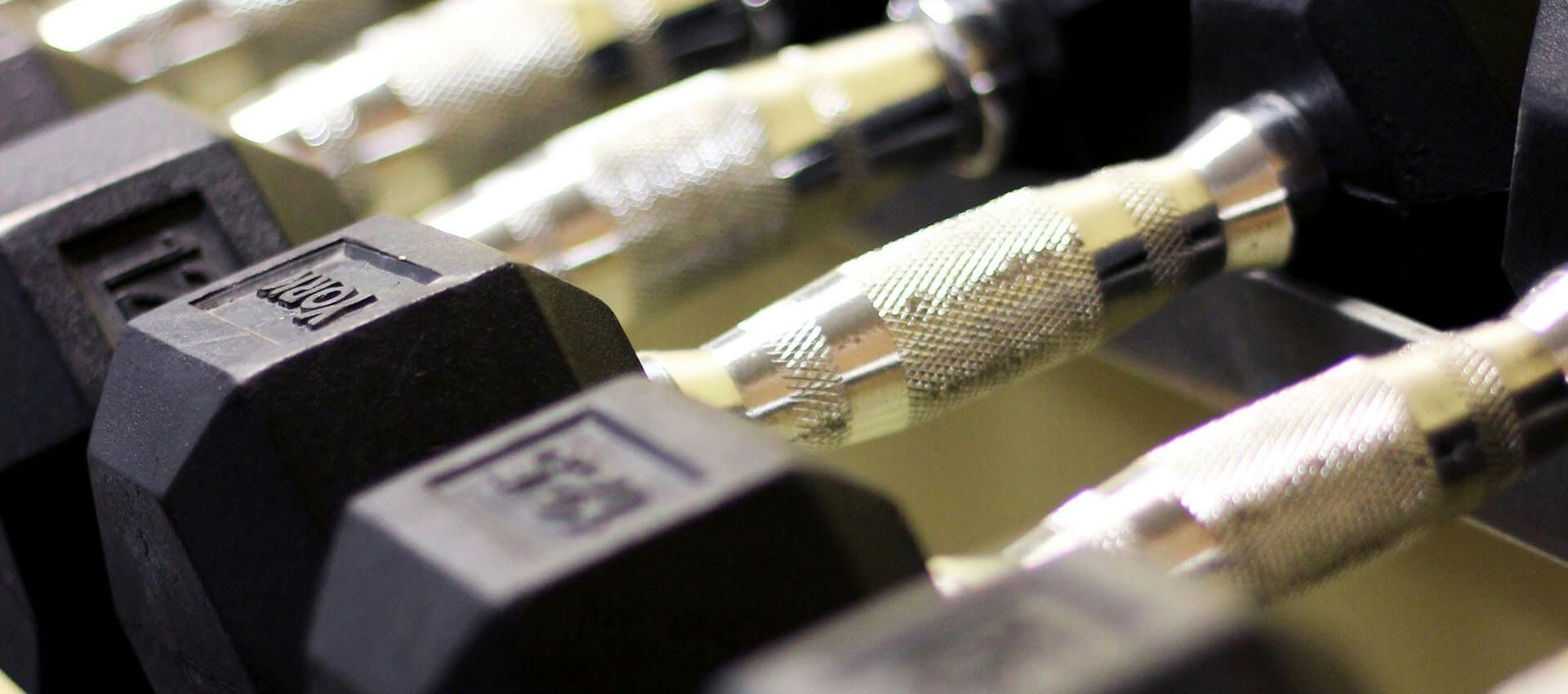Your Fitness Formula: Prioritizing Nutrition, Resistance, and Balanced Cardio

Losing weight and getting fit, especially if you are over 50 years old is about finding the right balance between nutrition, resistance training, and cardio.
It's a complex relationship. Our bodies adapt to maintain a steady calorie burn, regardless of our activity levels. Surprising, isn't it? But those are the facts.
Contrary to popular belief, relying solely on exercise, especially cardio, isn't the most effective way to lose fat.
Exercise remains a crucial component of overall health, even if it doesn't directly result in shedding pounds.
You knew that, right? Good!
I'm here to expand on that by telling you there is a better way to unlock your fitness potential with the right mix of nutrition, resistance training, and cardio.
Let’s get into it.
Introducing the Exercise Paradox
This piece from Scientific American sheds light on how human metabolism works and the surprising connection between physical activity and calorie burn.
Despite what many believe, being active doesn't always mean burning a ton more calories than being sedentary.
Studies comparing different groups, like the Hadza, a traditional hunter-gatherer community mentioned in the article, show similar daily energy expenditures no matter how much people move.
This highlights what I often preach:
If you want to get fit and lose body fat, take a holistic approach to fitness that goes beyond just exercising.
Prioritize Nutrition and Resistance Training
Want to get fit and lose weight?
Then prioritize nutrition, focus on resistance training, and include cardio in moderation.
While many believe cardio is top dog, followed by minimal resistance training and proper nutrition, the truth lies in reversing this order.
1. Prioritize nutrition
2. Focus on resistance training
3. Include cardio but in moderation
Here's why I love this order:
Nutrition should always come first because what you eat fuels your body, supports overall health, and helps you lose body fat.
Then comes resistance training: activities like lifting weights or using resistance bands that challenge your muscles.
1 – Getting Your Nutrition Right for Fitness Success
What’s the foundation of your successful fitness journey?
Nutrition.
What you eat is about fueling your body with the essential nutrients it needs to thrive. Whether you're lifting, running, or doing yoga, your body needs the right balance of proteins, carbs, fats, vitamins, and minerals to power through workouts, repair muscles, and keep you feeling your best.
Fill your plate with nutrient-rich whole foods to maximize health benefits.
You’ve heard this before but have you done it?
In this
Ultimate Diet article,
Ted Ryce, someone I trust, emphasizes the importance of eating whole, minimally processed foods, including protein, superfood vegetables, healthy fats, and carbs, to achieve optimal health and fitness goals.
He suggests tracking progress and, the best part: allowing occasional indulgences.
Following Ryce's advice can lead to faster fat loss, increased muscle gains, improved mood and energy levels, better digestion, and reduced risk of injuries.
I agree with Ryce's advice:
Eat whole foods – meats, fish, eggs, vegetables, fruits, healthy fats, and grains like quinoa and long-grain white rice.
Avoid processed foods and focus on nutrient-dense options.
Now let’s get into the big three: protein, fat, and carbs.
1. Protein
Protein is essential for building muscle and should be consumed at every meal,
Adequate protein intake is crucial for muscle growth and repair.
The recommended range of 0.8 to 1.2 grams per kilogram of body weight (or 0.36 to 0.54 grams per pound) supports muscle mass and overall health.
But for those over 50, protein intake may need to be increased (more on that below).
According to another voice I trust,
Layne Norton, increasing protein intake to 1.6 to 2 grams per kilogram of body weight (or 0.73 to 0.91 grams per pound) can lead to additional muscle gain.
If you're over 50 years old:
As people age, protein needs may increase due to decreased efficiency in processing protein and a higher risk of muscle loss (sarcopenia).
Getting enough protein is crucial for preserving muscle mass, strength, and functionality in older adults. Higher protein intake may also support recovery from health conditions commonly seen in the elderly, promoting overall health and well-being.
Note:
Protein needs vary based on activity levels, goals, and age. While consulting a registered dietitian is wise, the key takeaway is this: maintaining adequate protein intake is vital, particularly if you are over 50 years old.
Muscle loss, particularly for those over 50, results in weakness, declining health, and reduced independence. Therefore, a practical guideline for this age group is 0.5 to 1 gram of protein per pound of body weight.
2. Fat and Carbs
Healthy fats serve multiple functions in the body.
They provide energy and play a vital role in hormone production and absorption of fat-soluble vitamins. They also help absorb fat-soluble vitamins, like vitamins A, D, E, and K.
When incorporating fats into your diet, choose sources rich in unsaturated fats, omega-3 fatty acids, and other beneficial nutrients.
Some examples include:
Avocados:
Rich in monounsaturated fats and packed with vitamins and minerals, avocados are a versatile and nutritious addition to any meal.
Nuts:
Almonds, walnuts, and cashews are excellent sources of healthy fats, protein, and fiber. They make for convenient and satisfying snacks or toppings for salads and yogurt.
Olive oil:
Extra virgin olive oil is a staple in Mediterranean cuisine and is celebrated for its heart-healthy monounsaturated fats. Use it for cooking, salad dressings, or drizzling over roasted vegetables.
Fatty fish:
Salmon, trout, mackerel, and sardines are rich sources of omega-3 fatty acids, which are essential for brain health and reducing inflammation. Aim to include fatty fish in your diet a few times a week for optimal health benefits.
Carbohydrates are essential for providing energy, especially during high-intensity workouts.
While some advocate for low-carb diets and vilify carbs, I believe in a balanced approach. Opting for the right carbs at the right times is key to reaping their benefits.
Carbs are more than just energy sources—they provide essential fiber, vitamins, and minerals for your health. For instance, blueberries offer immune-boosting and anti-cancer properties.
Choose nutrient-dense, complex carbohydrates such as whole grains, legumes, fruits, and vegetables to sustain energy levels and support vital bodily functions.
Fruits, like berries, are particularly beneficial for gut health due to their fiber content. Here are a few recommended carb sources:
- Berries: Packed with vitamins, minerals, energy (in the form of natural sugars), and fiber, they offer a range of health benefits.
- Sweet potatoes: Rich in beta-carotene, these tubers provide essential nutrients and promote skin health.
- Squash: Loaded with vitamins and minerals, squash offers numerous health benefits and can be a versatile addition to meals.
- Quinoa: A complete protein source, quinoa is also high in fiber and provides various vitamins and minerals.
- Beans: Rich in fiber, protein, and nutrients, beans offer numerous health benefits, but proper rinsing and preparation may be necessary.
- Long-grain white rice, such as Basmati, can be a staple as can black or brown rice.
I like nutrient-dense options like brightly colored fruits and vegetables, high-fiber grains, and quality meats. A common sense approach that works.
2 – The Power of Resistance Training
Think of resistance training as your foundation for getting fit.
It builds muscle, boosts metabolism, aids fat loss, enhances metabolic health, and supports sustained weight management and overall wellness while improving mobility, strength, and cardiovascular fitness!
Resistance training ensures you continue burning calories long after your workout sessions, promoting lasting fat loss and metabolic well-being by stimulating muscle growth and elevating your resting metabolic rate.
Do some resistance training, and you continue burning calories long after your workout by elevating your resting metabolic rate.
Also, resistance training builds muscle. Muscle burns more calories at rest than other tissues like fat.
Building muscle helps increase your resting metabolic rate. The more muscle you have, the more you continue to burn calories.
So you'll burn more calories even when you're not working out, making it your key for long-term fat loss and metabolic health.
All good! But here is more…
Beyond its role in fat loss, resistance training offers a ton of benefits:
- Enhances feelings of well-being and confidence
- Improves mobility and functional strength
- Promotes longevity and fortifies against age-related muscle and bone loss
- Acts as an energy booster and mood enhancer
- Reduces blood pressure and bolsters cardiovascular health
- Enhances balance, coordination, and resilience against injuries
I could go on, but here’s the thing:
Incorporating resistance training into your fitness routine helps you look and feel better, helps you lose fat, and improves your overall health and well-being.
3 – Balancing Cardio for Health and Performance
While cardio is important, it shouldn't steal the spotlight, especially if your goal is to shed body fat and prevent injuries.
As we age, losing lean muscle tissue and bone density can lead to joint issues and a slower metabolism.
Resistance training is how you slow down this stuff!
But don't dismiss cardio.
Think of doing moderate-intensity cardio activities like brisk walking, cycling, or swimming to enhance endurance alongside your resistance training routine.
Remember, it's not just about what you do during workouts but also what you do outside of them that counts. Activities like walking, hiking, and stair climbing greatly impact overall health.
Your Perfect Blend of Nutrition, Resistance, and Cardio
Getting fit and shedding pounds, particularly for those over 50 is about balancing nutrition, resistance training, and cardio.
You’ll lose weight and increase vitality, longevity, and overall well-being by prioritizing resistance training, eating nutrient-dense food, and moderate cardio.
So, embrace the big three, put them in the right order (1. Nutrition, 2. Resistance, 3. Cardio), and watch as your efforts translate into a healthier and happier you.
Ready to take your fitness journey to the next level?
Reach out to me now, and let's craft a customized training plan designed just for you!
Before diving into any dietary changes and for personalized diet advice, consult with a registered dietitian.












